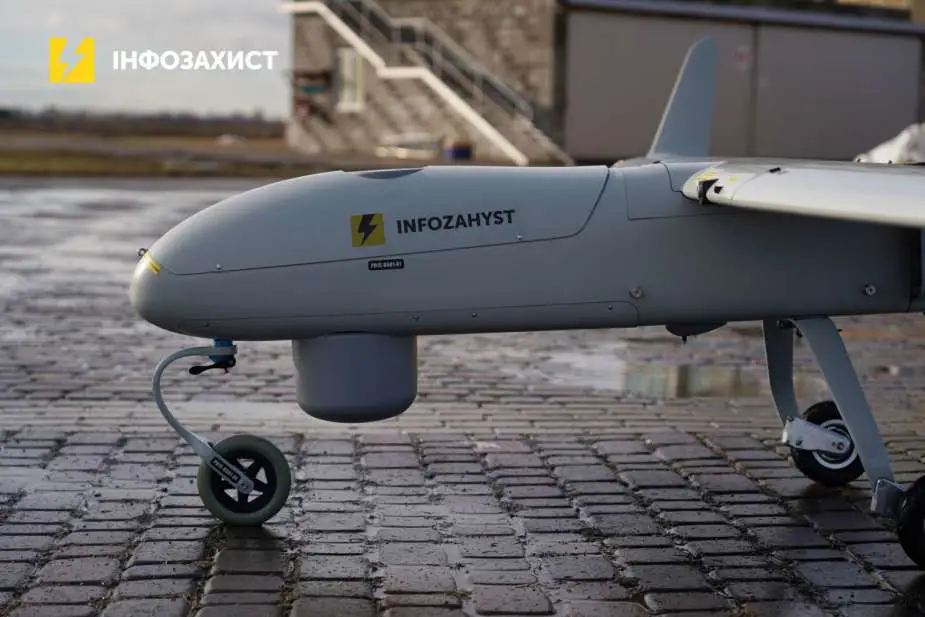Breaking news
Ukrainian reconnaissance drone Gekata to reach battlefield by late 2023.
On August 30, 2023, the Gekata, a high-range reconnaissance drone, is in the testing phase and is expected to be deployed on the battlefield by the end of the year. Integrated into the PD-2 drone complex of the Ukrainian company Infozahyst Research and Production Center, the Gekata is designed to provide defense forces with new intelligence capabilities.
Follow Air Recognition on Google News at this link
 Ukrainian reconnaissance drone "Gekata" (Picture source: Infozahyst)
Ukrainian reconnaissance drone "Gekata" (Picture source: Infozahyst)
The development of drones has become a priority, and their effectiveness in the Russo-Ukrainian conflict is well-established. However, the focus is often on attack drones capable of delivering explosive payloads. The use of these drones is not limited to just attacks; reconnaissance is an essential element, especially since Ukrainian drone operators work in pairs—a reconnaissance drone and an attack drone—to confirm the destruction of targeted equipment. Therefore, we will focus a bit on this new reconnaissance drone, the Gekata.
The Gekata is capable of passively detecting a variety of radio signals, including those from enemy radar systems and electronic warfare stations. It can simultaneously track up to 200 moving targets in a 360-degree circle. The system can recognize a ground target at a distance of up to 450 kilometers and is capable of detecting radio signals from ground and aerial sources in real-time. Additionally, the drone has a wingspan of five meters, making it difficult to detect.
One of the key advantages of the Gekata is its ability to perform intelligence tasks at a fraction of the cost of a traditional AWACS (Airborne Warning And Control System). The director of the research and production center at Infozahist, Yaroslav Kalinin, explained that the Gekata allows for the creation of a mobile reconnaissance network that can perform the same functions as bulky ground systems.
The Ukrainian reconnaissance drone is capable of detecting, sorting, and distinguishing signals from enemy means. It automatically compares the detected signal with the signature base and notifies the operator if the signal belongs to the radars of ground-to-air missile systems like Buk, Osa, S-300, or even a MiG-31 interceptor. The PD-2 drone, which carries the reconnaissance complex, can cover distances of up to 1000 kilometers and stay in the air for up to 12 hours.
Therefore, the Gekata will be a good addition to the Ukrainian armed forces. It remains to be seen what capabilities this drone will demonstrate on the battlefield. Several reviews of its performance are expected to be made by 2024.


























